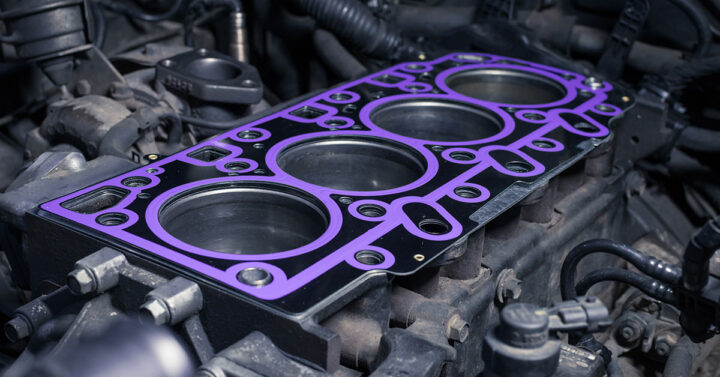How To Fix A Blown Head Gasket: A Comprehensive Guide

A blown head gasket is a common yet serious issue that can plague car owners. It occurs when the head gasket, which seals the engine’s combustion chamber, fails.
This can lead to a variety of problems, including engine overheating, coolant leaks, and loss of engine performance.
In this guide, we will walk you through the steps to fix a blown head gasket, enabling you to get your car back on the road in no time.


Diagnose the Issue
First and foremost, verify that you’re dealing with a blown head gasket. Common symptoms include:
- White smoke from the exhaust
- Milky or frothy oil due to coolant contamination
- Coolant leaking from the engine’s sides
- Overheating engine
- Loss of engine power
Gather the Necessary Tools and Supplies
To fix a blown head gasket, you’ll need the following tools and supplies:
- New head gasket
- Torque wrench
- Socket set
- Breaker bar
- Flathead screwdriver
- Gasket scraper
- Engine hoist (optional)
- Engine degreaser
- Coolant and oil
- Service manual for your vehicle
Prepare the Engine
Begin by disconnecting the battery and draining the coolant and oil from the engine.
Next, remove any components obstructing access to the cylinder head, such as the intake manifold, exhaust manifold, and valve cover.
Consult your service manual for the specific removal procedure for your vehicle.
Remove the Cylinder Head
Using your breaker bar and socket set, loosen and remove the cylinder head bolts in the reverse order of the tightening sequence specified in your service manual.
Carefully lift the cylinder head off the engine block, utilizing an engine hoist if necessary. Be cautious not to damage any mating surfaces during removal.


Clean and Inspect the Mating Surfaces
With the cylinder head removed, use the gasket scraper to carefully remove any remnants of the old head gasket from both the cylinder head and engine block surfaces.
Thoroughly clean the surfaces with engine degreaser, ensuring that no debris remains.
Inspect the mating surfaces for damage, such as cracks or warping. If necessary, have the cylinder head resurfaced or replaced by a professional machine shop.
Install the New Head Gasket
Position the new head gasket on the engine block, ensuring it is correctly aligned with the dowel pins and bolt holes.
Carefully lower the cylinder head onto the gasket, avoiding any misalignment or damage to the gasket.
Reassemble and Torque the Cylinder Head
Following the tightening sequence and torque specifications from your service manual, use the torque wrench to tighten the cylinder head bolts.
This is crucial as incorrect torque can lead to gasket failure or engine damage.
Reinstall Removed Components
Reattach any components you removed during disassembly, such as the intake manifold, exhaust manifold, and valve cover.
Reconnect all hoses, wiring, and accessories, ensuring everything is securely fastened and properly routed.
Refill Fluids and Reconnect the Battery
Refill the engine with fresh coolant and oil, ensuring they are at the correct levels. Reconnect the battery and start the engine, checking for any leaks or unusual noises.
Test Drive and Monitor
Take your vehicle for a test drive to ensure it is running smoothly and monitor the engine temperature and performance.
If everything appears normal, you have successfully fixed your blown head gasket.


Conclusion
Fixing a blown head gasket is a labour-intensive task that requires attention to detail and mechanical knowledge.
However, with patience, the right tools, and a good service manual, it is possible for skilled DIYers to tackle this repair at home.
By following this comprehensive guide, you can potentially save yourself from costly repair bills while also gaining a better understanding of your vehicle’s inner workings.
Just remember to always prioritize safety, consult your service manual for specific instructions, and seek professional assistance if you are unsure about any step of the process.
With diligence and care, you’ll have your car back on the road in no time.
Of course, if this seems too much of a challenge, you can always scrap your car and upgrade to a later model.





